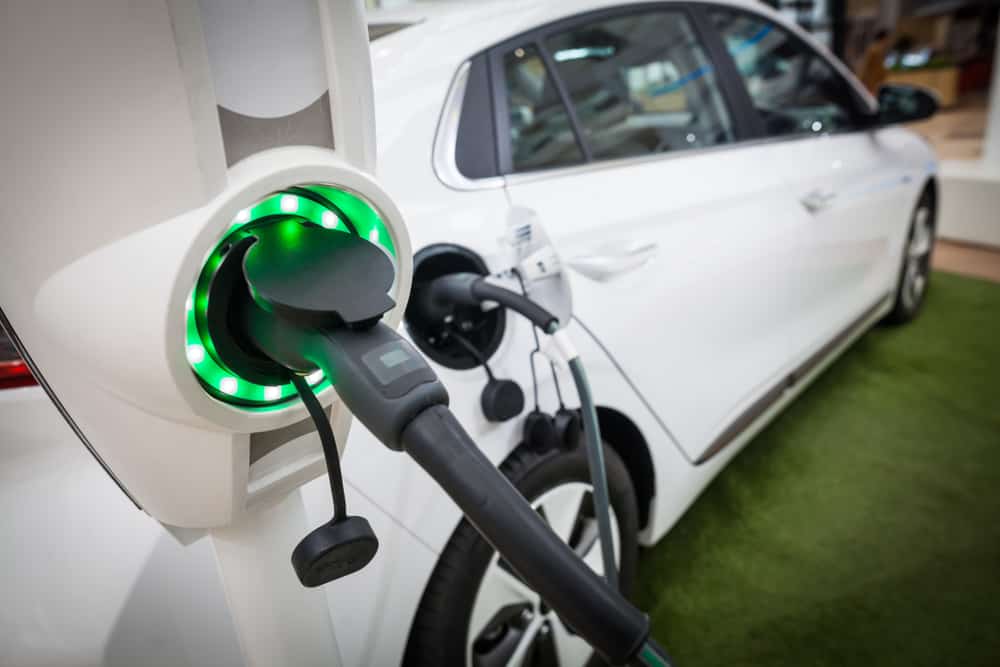Electric vehicles (EVs) have been rapidly transforming the transportation landscape, offering a cleaner and more eco-friendly alternative to gasoline-powered vehicles. However, for many considering the switch, a lingering question remains: how exactly do EV charging stations work? Do not worry, future drivers of electric vehicles! This article will help you comprehend the essential components that make up the EV Infrastructure, so you’re able to confidently navigate the new and exciting world.
The Core Concept is: delivering power, restoring Energy
The EV charging stations operate on a simple but deceptive principle: They serve as an intermediary between the electricity grid and your vehicle’s battery. Consider them as electron pumps, replenishing the energy reserves that propel your EV forward. It’s as easy as parking your vehicle in front of the charging station. Connect the charging cable using an adapter plug and you’re done! The flow of electricity starts.

Plugging in – Compatibility Charging Rates and Charger Speeds
While the fundamental concept remains the same for all EV charging stations, there are some variations in the plugs and charging speed. The different plug configurations at EV charging stations are similar as those found in gasoline stations. They vary based on the model of the vehicle, as well as the charging method. Understanding these variations is essential for a comfortable charging experience.
Tesla Superchargers, a Network of Speed
Tesla owners enjoy an exclusive network of strategically placed Tesla Superchargers. The fast-charging stations are made for Tesla cars and boast impressive charging rates, allowing customers to charge their batteries within a shorter period of time as compared to standard charging stations. This means shorter charging intervals and reduced waiting times for long distance journeys in the Tesla more efficient.
Explore other charging options: beyond Tesla
The EV charging infrastructure extends far beyond Tesla Superchargers. There are a variety of public charging station options that are operated by different businesses and operate with a broad range of electric vehicles. These stations typically have different charging rates, starting at Level 2 which offers more rapid charging than an outlet at home, to DC Fast Chargers. They provide charging times equivalent to the times for gas station refills.
Range anxiety: Plan your Charge!
This is one of the top concerns of prospective EV owners. The fear of running out of power has decreased due to the increased number of charging stations, and also the increasing performance of modern EVs. Many EV models are capable of driving hundreds of miles with a single charge. Apps to help plan routes can also locate charging stations that are on your route.
The technology behind the charge: A Glimpse Inside
The power of EV charging stations is in the clever interplay between technology. In the simplest sense, the station functions as a converter, turning the alternating current (AC) electricity that is generated by the grid into direct current (DC) electricity which is the type of power your EV battery requires. In addition, the station is equipped with safety protocols and security features to ensure safe and effective charging process.
Accessibility and convenience: Charging forward
The charging of electric vehicles is becoming more convenient and simple to access. A lot of charging stations in public have a user-friendly interface and give the option to pay using cards or a specific mobile application. Chargers are being set up in a few workplace and residential complexes, allowing motorists to charge their electric vehicles at their home or in the office.
The Green Grid Connection Promotes Sustainability
The growth of EV charging stations can bring significant environmental advantages. Through promoting the use of electric vehicles, which produce zero tailpipe emissions stations are helping to create cleaner air and a more sustainable transportation system. As the grid shifts to renewable energy sources such as solar power and wind power, charging electric vehicles will become greener. We’ll become less dependent on fossil fuels.
The process of de-mystifying EV Charging Stations can help potential EV owners to make educated choices. These stations, with their easy operation, increasing accessibility, and their role in promoting sustainable mobility, are the basis for a future powered cleanly and efficiently through electric mobility. The next time you come across an electric vehicle charger, don’t forget that it’s not just a connector, but a gateway to an environmentally friendly and sustainable future for transport.